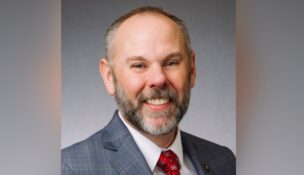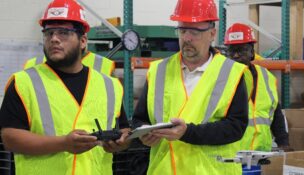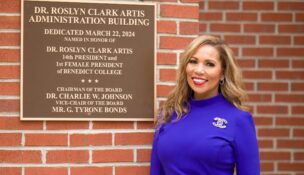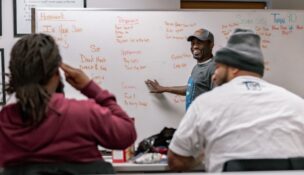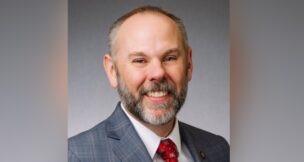USC initiative recruiting professionals to rural classrooms
Contributing Writer //March 17, 2020//
By Christina Lee Knauss
South Carolina has a serious problem when it comes to keeping teachers in the classroom.
In recent years, alarming numbers of public school teachers have left their jobs, causing shortages of instructors in many disciplines and forcing school officials to frequently look elsewhere, even overseas, to fill positions.
The educator exodus has particularly hit the state’s rural districts hard.
How many teachers leave their classrooms behind each year in the Palmetto State? Try thousands.
While retirees account for many departures, teachers cite other reasons for not coming back, ranging from low pay to on-the-job stress and discipline issues.
A report by the Center for Educator Recruitment, Retention and Recruitment showed more than 6,600 teachers left the state’s public schools at the end of the 2018-19 school year.
This was a slight improvement from the 2017-18 numbers, when more than 7,000 left the classroom behind because of a larger-than-normal number of retirements.
But those numbers are still far too high, according to school district officials, state officials and educators themselves.
In an effort to boost the state’s teacher rosters, the University of South Carolina’s College of Education has developed Transition to Teaching, a new one-year residency graduate program for professionals who have an undergraduate degree in an area other than teaching and are interested in bringing their skills into the classroom.
The program will focus on recruiting new teachers for the state’s chronically underserved rural school districts.
Transition to Teaching is funded by a $5 million Teacher Quality Partnership Grant from the U.S. Department of Education and will start enrollment this spring. In its first year, the initiative will be rolled out in the Colleton County School District and the Orangeburg County School District.
“As the flagship university of the state of South Carolina, my colleagues and I in the College of Education are always looking for ways to serve the students in the state,” said George Roy, an education professor who is leading the new initiative along with colleagues Melissa Baker, Rachelle Curcio and Stephen Thompson. “We partnered with both rural district partners because they were identified with facing the challenge of not only recruiting teachers but also retaining them.”
Participants in Transition to Teaching will receive onsite instruction and be placed in classrooms in one of the two partner districts, where they will work and learn alongside veteran teachers and faculty from the College of Education.
Once they complete the residency, fellows will have earned a master’s degree in education.
“The faculty will be able to provide guidance, mentorship and support in actual school settings and, as a result, help candidates with challenges unique to our rural communities,” Roy said. “Participants in this program will be prepared to lead their own classrooms when they graduate.”
Support goes beyond the year-long residency. Participants will also receive an additional three years of support and professional development through the College of Education’s Carolina Teachers Induction Program, known as CarolinaTIP. Fellows in the program will also receive a $15,000 annual stipend to help with housing, transportation and other expenses.
In exchange, the partner districts will be assured of having new teachers in place, as fellows are required to teach in their partner district for at least three years after they complete their master’s degree.
Officials in the partner-districts are excited to see what Transitions in Teaching can do to improve the number of teachers available to serve their students.
Orangeburg County School District includes 33 public schools serving about 14,535 students. The rural district has to fill between 60 and 70 new teacher positions each year, according to Jesse Washington III, the district’s chief of staff.
Orangeburg is one of many South Carolina districts that has had to look beyond U.S. borders to fill teaching slots. Currently it employs 90 teachers from foreign countries who make up about 7% of the teacher base, Washington said.
Colleton County’s district, located in the southwestern part of the state along I-95, serves 6,000 students spread across seven elementary schools, one middle and one high school, and a career technology center.
“Colleton County has been dealing with shortages for several years, and part of the reason is that we are a rural area,” said Cliff Warren, assistant superintendent of human resources and operations. “It can be difficult to get teachers to come here in the first place because of pay differences between rural and urban areas. We often don’t have as many job candidates in the first place, and losing teachers makes it worse.”
Currently, six classes in the district this year do not have a permanent certified teacher available and instead are being served by long-term substitutes.
The majority of those are in the district’s lone middle school, which serves 1,300 students. Warren said middle school can be one of the hardest levels when it comes to teacher retention because the age group can be challenging to teach in the first place.
He has high hopes for Transition to Teaching and what it will do not only for Colleton County’s students but for the adults who enroll in the USC program.
“We want to do anything that we can to get nontraditional teachers into the classrooms to help with our shortage,” Warren said. “That’s one benefit of this program, and the other is increasing the education levels of people in our communities. This is a win-win for the community as a whole.”
This article first appeared in the March 16 print edition of the Columbia Regional Business Report.






